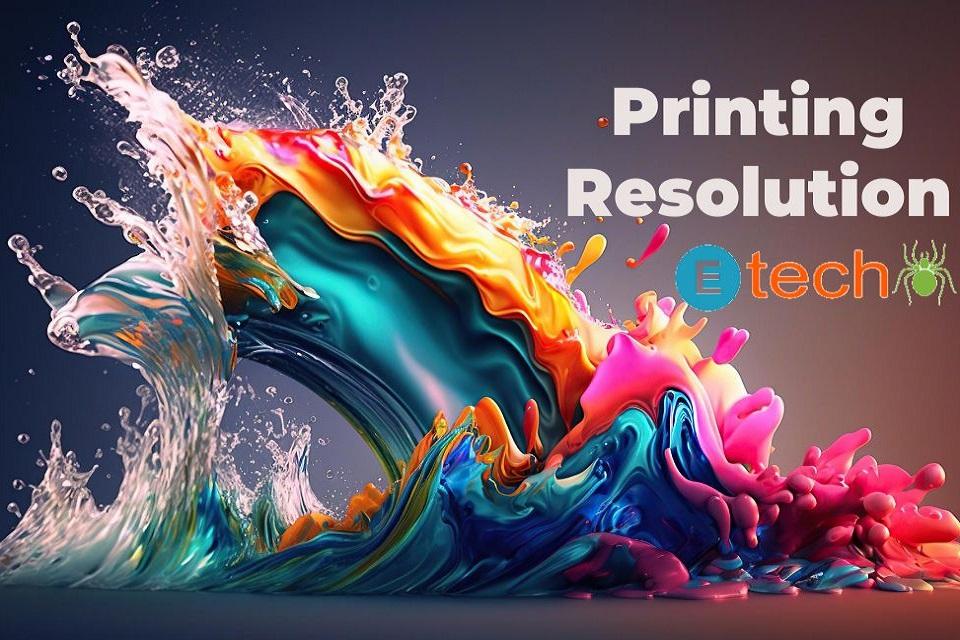Printing high-quality visuals is a great way to add context to a guide or explain complicated concepts. But it’s essential to know the proper resolution for your image.
Resolution is the number of tiny pixels that make up an image. Your image will be more precise and more detailed a higher resolution.
Image Size
Printing a beautiful artwork requires more than just the correct image file; it also needs the proper resolution. This is because image resolution determines how sharp and clear your final print will be. The higher the resolution, the more detail your photo will have.
Image resolution is measured in dots per inch or dpi. It is inversely proportional to the size of your print and viewing distance, meaning that the larger your print and the farther away you are from it, the lower your resolution can be and still look sharp.
Most online print services require a minimum resolution of 300 dpi, the golden standard for high-quality prints. Anything less will not print crisp and clear and may appear pixelated.
You can test your file by converting it to a square and checking the dpi value. If it is below 300 dpi, you must resize the image. This can be done in many popular photo-editing software programs.
If you want to use a program that does not automatically change the dpi of your files, uncheck the option in the program settings. Once this is done, you should be able to enter your desired dpi into the program and have it create an appropriately sized image for printing.
Image Aspect Ratio
If you’ve ever printed a photo or created a poster, you know that the correct resolution is essential for making a print that looks great. But what is the best image resolution for printing, and how do you make sure your files have enough solution? In this UK guide to printing resolution, we’ll answer all your questions and share some quick tips for getting the best results.
In printing, image resolution is about how many tiny pixels are packed into a square inch. The higher the resolution, the sharper and more detailed your print. Resolution is usually measured in ppi (pixels per inch) when discussing images on a computer screen and dpi (dots per inch) when discussing photos.
While pixel density is essential, it’s also necessary to consider the aspect ratio of your image. Aspect ratio is the relationship between your image’s width and height, typically expressed in a number format such as 4:3 or 16:9. Different aspect ratios are better suited to different types of images. For example, landscape photos usually have a wider aspect ratio, while cinematic films have a much narrower aspect ratio.
The best resolution for printing can vary depending on your printer, project size, and viewing distance. However, we recommend creating your artwork at 300 dpi or higher. This will ensure that your prints have plenty of detail and won’t appear pixelated when enlarged.
Image Resolution
The resolution of an image is the number of pixels per inch (PPI). A higher PPI value means greater detail and better print quality. When it comes to printing, image resolution is the most critical factor. If your images have a low PPI value, they will appear pixelated or blurry when printed.
PPI is a standard unit of measurement for digital images. It is also sometimes referred to as dpi, which stands for dots per inch and is relevant when discussing prints produced by an offset press.
When deciding on the proper resolution for your print project, it is essential to consider the type of project and how it will be used. For example, using the image for a business flyer or other large-format print piece is best to choose 300 PPI or higher. This will ensure the print is sharp and clear when viewed up close.
A lower PPI may be acceptable if you use the image for a smaller project, such as an 8″ x 10″ photo or postcard. However, if you plan to print the image on fine-art paper and want it to be viewed from a distance, 150 PPI or higher is recommended. This will allow the printer to produce a high-quality print while keeping the pixel density as high as possible.
Image Compression
Regarding printing, image resolution is critical in how well your print project will turn out. If you have a low-resolution image, it will appear pixelated and blurry when printed, even though it may look fine on your computer screen.
When selecting the proper resolution for your print job, consider how it will be used and the type of printer you have. For example, if you plan to use your prints for a poster, 300 DPI will be ideal. This will ensure that the image is high-quality and can be viewed from a distance. However, 150 DPI will be sufficient if you print it on a postcard. This will allow your postcards to be easily read when mailed and will keep the cost of production down.
You can also test an image’s resolution by enlarging it. If the image becomes pixelated, it is not print-ready. Resolution and size are inversely proportional: when an image is enlarged, its resolution decreases.
A simple rule of thumb is always to select the highest DPI possible for your document. This will guarantee that your print will be clear and sharp and help prevent pixelation. To find the DPI of an image, locate the file in a finder window and right-click on it to view its properties. The DPI is listed in the Image section labeled Resolution.




